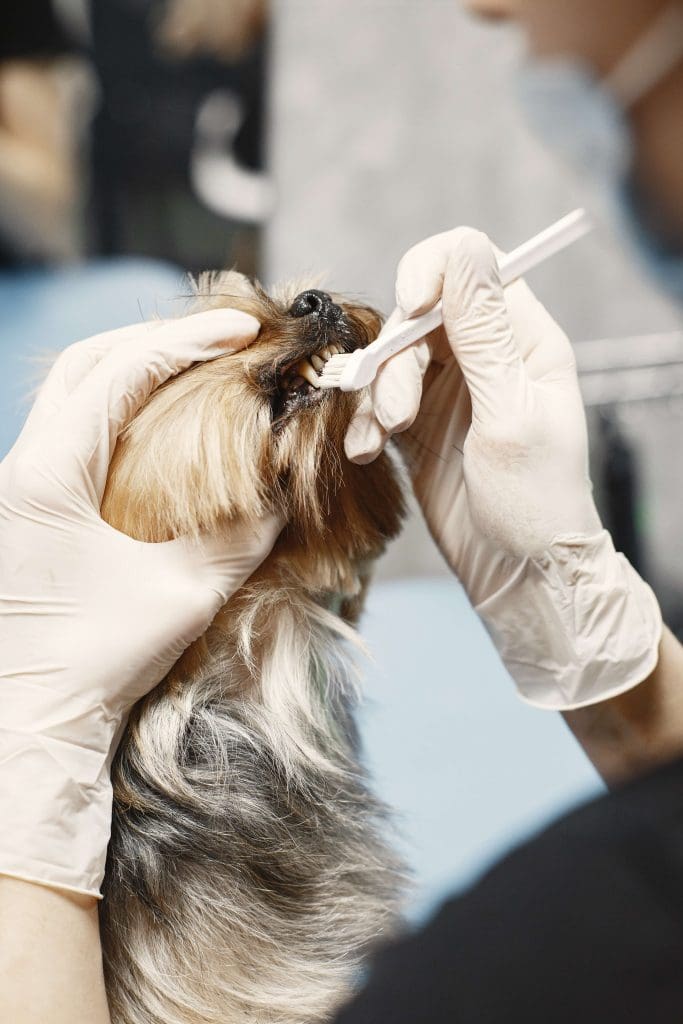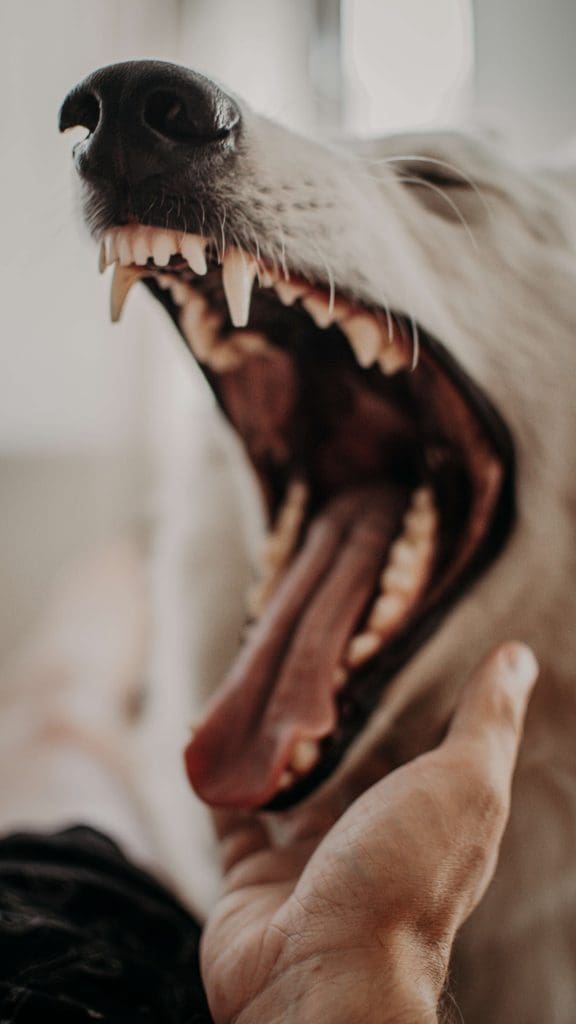If you’re no stranger to dog kisses, you’ve probably had at least a passing thought about the cleanliness of your pet’s mouth.
An average dog’s mouth is home to about 600 different kinds of bacteria — overwhelming until you learn that humans have around 615. Not all of this bacteria is harmful, in fact, much of it is essential to maintaining a healthy mouth microbiome and preventing the overgrowth of yeast. An excess of the wrong kind of bacteria, however, can lead to painful tooth and gum decay over time.
When it comes to periodontal disease, a little daily prevention can make a world of difference as your dog ages.
 What is Periodontal Disease?
What is Periodontal Disease?The bacteria in your dog’s mouth form plaque, an invisible film that coats the teeth, gums, and space beneath the gum line. If plaque isn’t removed regularly, it will harden into tartar.
Plaque and tartar don’t just cause discolored teeth and bad breath — they can irritate the tissues of the mouth and create pockets between the gums and teeth. Periodontal disease may remain undetected for years, but without intervention, it can lead to pain and tooth loss.
Often, the first sign of periodontal disease is bad breath. If your dog’s kisses have become less pleasant, don’t write it off — unaddressed halitosis can soon come with additional symptoms, like:
The most frightening thing about periodontal disease is that the bacteria that infect your dog’s teeth and oral tissues don’t always stay put. When bad bacteria enter the bloodstream, the heart, liver, and kidneys are at risk for dangerous inflammation.
Caring for your dog’s teeth is an important part of reducing their risk of cardiomyopathy and other serious diseases.
Regular dental care is a critical part of your dog’s overall wellness. Your vet can examine your pet for dental disease and determine a treatment plan based on the severity of their condition.
Periodontal disease in dogs is classified into four stages:
Stage 1: Gingivitis, or red, swollen gums are present, but there is no loosening of the teeth.
Stage 2: There is mild-to-moderate loss of the structures that hold the teeth in place with more severe gum inflammation.
Stage 3: A loss of up to 50% of the bones and ligaments that support the teeth has occurred.
Stage 4: More than 50% of the teeth’s support structures are missing, teeth are damaged and discolored, and the gums are visibly retracted.

While some pets may be genetically predisposed to oral issues, plaque is an unavoidable part of life for all dogs. The only way to prevent harmful bacteria from damaging your dog’s teeth and gums is to make oral care part of their routine.
While it may seem like a daunting task, with a little patience and persistence, most dogs can become tolerant of daily toothbrushing.
Your odds of success are greatest if you introduce tooth care when your dog is young and in good oral health. Pets who have already developed gum and tooth pain will probably respond badly and may need to have their teeth cleaned by a vet under sedation.
Unsure how to get started? Check out our tips for making toothbrushing more enjoyable for your dog here.
Look for dog treats that are formulated to help clean teeth and support a healthy mouth microbiome. Certain chew toys can also promote strong teeth and gums — just make sure that you clean them regularly to keep harmful bacteria in check.
Not only does your dog’s nutrition directly affect their mouth health, but an overgrowth of bad bacteria in their mouth can cause digestive issues. If your dog is struggling with buildup, your vet can recommend pet foods that help control plaque and tartar.